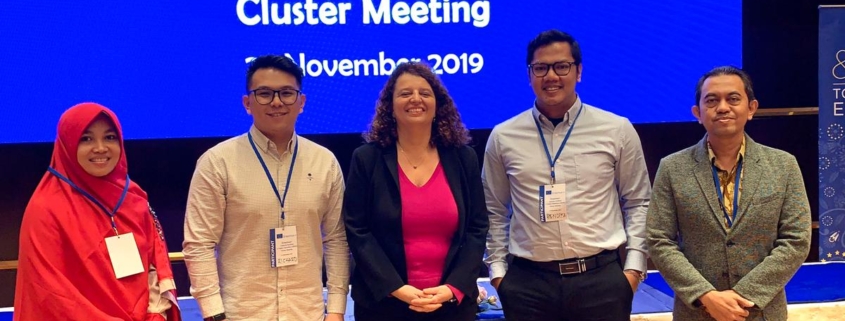Dwi Handayani, Berta Maya Sopha, Budi Hartono, M K Herliansyah
Perencanaan yang baik merupakan faktor penting dalam keberhasilan evakuasi, khususnya pada evakuasi bencana erupsi Gunung Merapi. Evakuasi yang terencana dengan baik dapat menyelamatkan ribuan nyawa, harta benda dan infrastruktur sosial. Hal ini sejalan dengan tujuan dari Humanitarian Logisics yaitu merancang dan mengendalikan sistem yang efektif dan efisien guna meringankan penderitaan korban bencana.
Permasalahan yang ada saat ini yaitu kebijakan penentuan jalur evakuasi pada saat erupsi Gunung Merapi belum dilaksanakan secara sistematis dan kuantitatif, sehingga kebijakan penentuan jalur evakuasi dinilai belum efektif dan efisien. Perencanaan kuantitatif dinilai lebih baik karena lebih terukur yang melibatkan analisis mendalam berdasarkan berbagai skenario yang diperoleh dari simulasi komputer.
Metode yang digunakan dalam penelitian ini adalah dengan menganalisis pustaka dari penelitian-penelitian yang pernah dilakukan. Hasil kajian pustaka menghasilkan diagram alir perilaku yang terdiri dari lima jenis perilaku masyarakat Gunung Merapi saat menghadapi evakuasi bencana. Diagram alir perilaku tersebut merupakan model konsep sebagai dasar untuk merancang model Agent-Based Modeling (ABM), yaitu pemodelan berbasis komputer, dimana model tersebut diharapkan mampu menerapkan interaksi dari sistem adaptif yang kompleks yang menitikberatkan pada pendekatan bottom-up.
Sumber:
https://medwelljournals.com/abstract/?doi=jeasci.2017.5443.5451
https://m.bernas.id/66957-sistem-evakuasi-bencana-merapi-tekan-korban-jiwa.html


